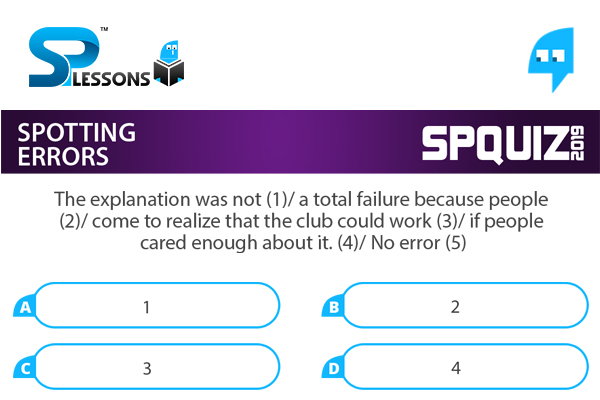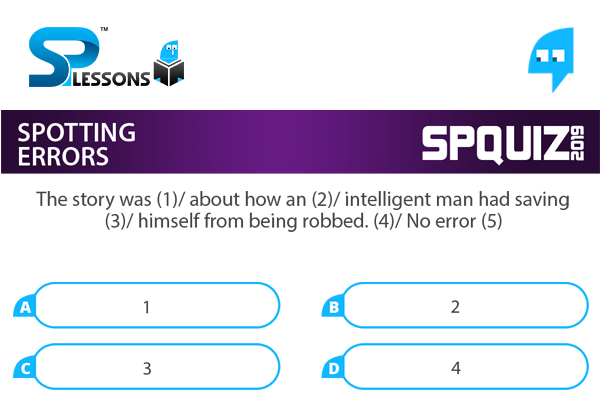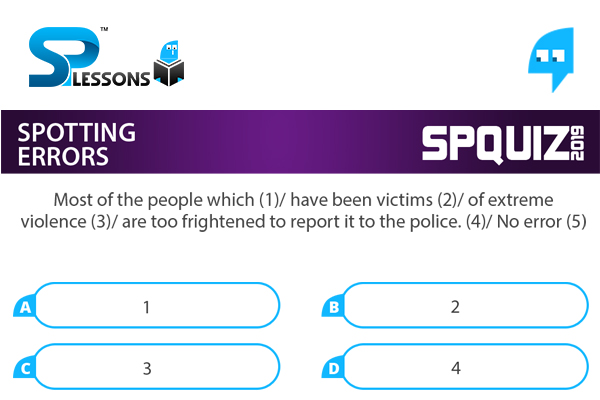 Introduction
Introduction
What is spotting error?
Spotting errors are asked in verbal reasoning. You need to spot sentences and error which are grammatically incorrect. This error can be anything. From noun to pronoun to singular/plural to word usage they can be anything.
How do you identify error in a sentence?
- Always read the entire sentence.
- When looking for the error, examine each choice individually.
- Check verbs and pronouns first, since they’re the most likely to include errors.
- When an answer choice contains more than one type of word, check both.
 Q1
Q1
You might not have (1)/ heard about the ice-cube collectors before (2)/ but they are really not (3) / strongest as they sound. (4)/ No error (5)
- A. 1
B. 2
C. 3
D. 4
The contextual meaning of the statement is to depict that the ice cube collectors portray themselves as very strong but are not strong in that proportion. To depict this meaning, in the last part of the statement 'as strong as' needs to be used instead of 'strongest as'.
Hence, option D is correct.
 Q2
Q2
The explanation was not (1)/ a total failure because people (2)/ come to realize that the club could work (3)/ if people cared enough about it. (4)/ No error (5)
- A. 1
B. 2
C. 3
D. 4
The error is in the third part of the statement. The verb form 'come' needs to be replaced with 'came' as the timeline of the statement is of past tense. It is the main verb in the phrase 'came to realise' and thus needs to take the tense of the statement.
Hence, option C is correct.
 Q3
Q3
Each morning they (1)/ emptied they tray (2)/ into large garbage cans (3)/ which were placed in the street. (4)/ No error (5)
- A. 1
B. 2
C. 3
D. 4
The error is in the second part of the statement as pronoun 'they' is used where a determiner 'their' is required instead. So, option B is the correct response.
 Q4
Q4
The story was (1)/ about how an (2)/ intelligent man had saving (3)/ himself from being robbed. (4)/ No error (5)
- A. 1
B. 2
C. 3
D. 4
The error is in the third part of the statement. The verb form is incorrect; 'saving' should can't be used in past perfect tense, which is evident from the usage of 'had', it needs to be replaced with 'saved'.
 Q5
Q5
Most of the people which (1)/ have been victims (2)/ of extreme violence (3)/ are too frightened to report it to the police. (4)/ No error (5)
- A. 1
B. 2
C. 3
D. 4
Who and sometimes that refer to people. That and which refer to groups or things. Which should be used for non-restrictive clauses, dealing with things. Who should be used for nonrestrictive clauses, dealing with people. The subject here is 'people' so the correct pronoun will be 'who'. Hence, option A is correct.








